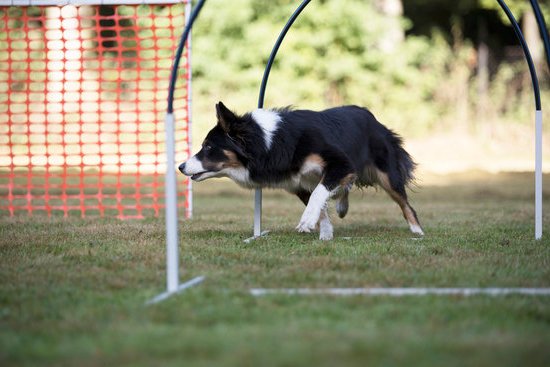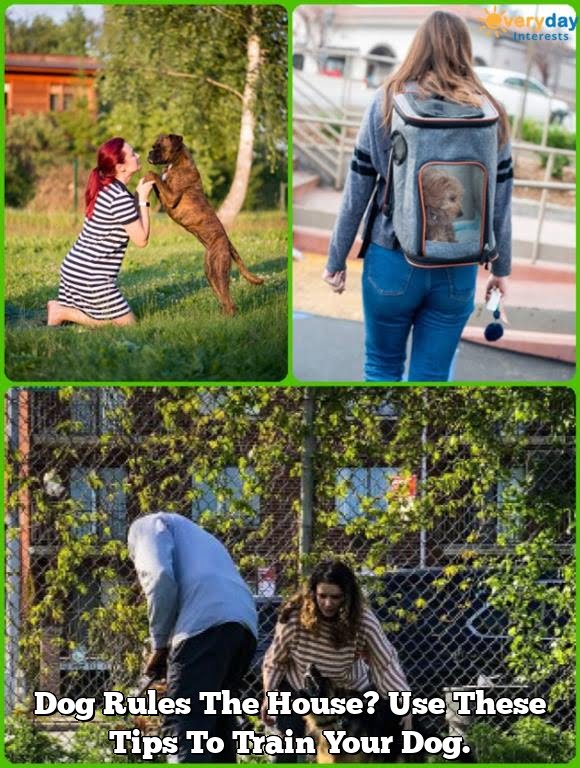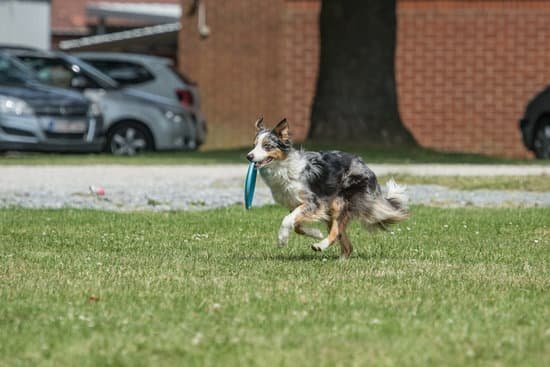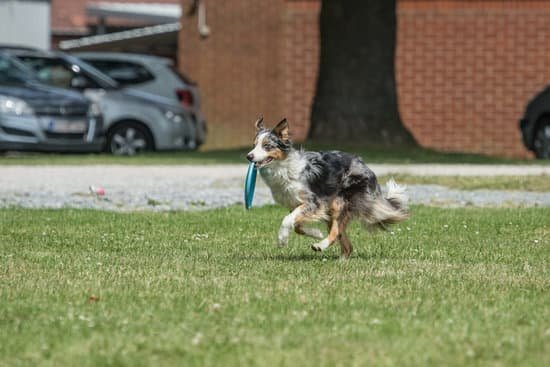Training your dog is not only about teaching them basic commands, but it is also about fostering a strong bond built on trust and communication. Knowing how to train your dog to respond to your cues and commands effectively can greatly enhance the quality of your relationship with your furry friend. By establishing clear expectations, setting boundaries, and using positive reinforcement techniques, you can create a harmonious environment where both you and your dog can thrive.
Communication is key when it comes to training your dog. By understanding how they learn and perceive the world around them, you can tailor your training methods to suit their individual needs. Consistency in training sessions is crucial in reinforcing good behavior and breaking unwanted habits. This consistency helps establish a routine that your dog will come to rely on, making the learning process smoother and more effective.
In this article, we will delve into the basics of dog training, from setting clear expectations to addressing common behavior issues such as barking or leash pulling. We will also explore advanced training techniques for teaching commands and tricks, as well as specialized training purposes like service dog training or agility training.
Remember, patience and persistence are key virtues when it comes to training your dog – celebrate each small victory along the way and watch as your bond with your canine companion grows stronger with each successful training session.
The Basics of Dog Training
When it comes to training your dog, establishing effective communication and building trust are the foundation for a successful training experience. By understanding how your dog communicates and learning to speak their language, you can create a strong bond with your furry friend and make the training process more enjoyable for both of you.
Understanding Your Dog’s Body Language
One of the key aspects of establishing communication with your dog is understanding their body language. Dogs communicate through gestures, expressions, and postures, so being able to interpret these signals can help you better understand their needs and emotions. For example, a wagging tail may indicate excitement or happiness, while a lowered head and ears may signal fear or submission. By paying close attention to your dog’s body language during training sessions, you can adjust your approach accordingly.
Building Trust Through Positive Interaction
Trust is essential in any relationship, including the one you have with your dog. Positive interaction plays a crucial role in building trust between you and your furry companion. This includes using treats, praise, and rewards to reinforce good behavior during training sessions.
By creating a positive association with training exercises, you can strengthen the bond between you and your dog while motivating them to learn new commands and behaviors. Remember that patience and consistency are key when it comes to building trust with your dog through training.
Setting Clear Expectations
Consistency in Training
One of the most important aspects of training your dog is consistency. Dogs thrive on routine and structure, so it is crucial to set clear rules and boundaries from the beginning. Consistency in your commands, expectations, and rewards will help your dog understand what is expected of them.
For example, if you don’t want your dog on the furniture, make sure that rule is enforced every time they try to climb up. Inconsistency can lead to confusion for your pet and hinder their progress in training.
Establishing Boundaries
Defining boundaries for your dog is essential for their safety and well-being. This includes setting limits on where they are allowed to go, what items they are not allowed to chew on, and how they should behave around people or other animals.
Use positive reinforcement techniques to encourage good behavior within these boundaries, such as offering treats or praise when your dog follows the rules. Consistent enforcement of these boundaries will help your dog understand their place in the household hierarchy and promote respectful behavior.
Correcting Inappropriate Behavior
When your dog crosses a boundary or breaks a rule, it’s important to address the behavior immediately. However, it’s crucial to do so in a way that is constructive and not punitive. Avoid using physical punishment or yelling, as this can create fear and confusion in your pet.
Instead, redirect their attention to an appropriate behavior or offer a simple verbal command like “No” followed by redirection towards a more desirable action. Consistency in correcting inappropriate behavior will help reinforce the boundaries you have established and ultimately lead to a well-behaved and happy companion. Remember that patience and persistence are key when training your furry friend.
Positive Reinforcement Techniques
When considering how to train my dog to respond well to positive reinforcement, it’s important to choose rewards that are highly motivating for them. Some dogs may be more food-motivated, while others may prefer playtime or verbal praise. By understanding what motivates your dog the most, you can tailor your rewards to their preferences and increase the effectiveness of the training process.
Consistency is key when implementing positive reinforcement techniques. Make sure to reward your dog immediately after they exhibit the desired behavior so they can make a clear connection between their actions and the reward. Additionally, be patient and persistent in your training efforts as it may take time for your dog to fully understand what is expected of them. With dedication and consistency, positive reinforcement can be a powerful tool in shaping your dog’s behavior positively.
| Key Points | Details |
|---|---|
| Rewards | Use treats, toys, or praise as rewards for desired behaviors |
| Motivation | Understand what motivates your dog and tailor rewards accordingly |
| Consistency | Reward immediately and be patient in your training efforts |
Consistency Is Key
When it comes to training your dog, consistency is crucial for success. Dogs thrive on routine and clear expectations, so establishing a consistent training schedule can help them learn more effectively. To train your dog successfully, it’s essential to set aside dedicated time each day for training sessions. This regularity helps your dog understand when they are expected to focus and learn, making the training process smoother and more efficient.
One of the first steps in establishing a routine for training sessions is to choose a specific time of day that works best for you and your dog. Whether it’s in the morning before breakfast or in the evening after dinner, consistency in timing can help create a sense of predictability for your furry friend.
Additionally, having a designated training area free from distractions can aid in maintaining focus during sessions. This could be a quiet corner of your home or a specific spot in your yard where you conduct training exercises.
During each training session, it’s important to follow a structured format to keep things organized and productive. Start with a brief warm-up period to get your dog into the right mindset for learning. Then, introduce new commands or practice existing ones using positive reinforcement techniques such as treats or praise.
Remember to keep training sessions short and engaging to prevent boredom or frustration for both you and your dog. Consistency in the length and format of each session will help reinforce learning and solidify good behavior over time.
| Aspect | Importance |
|---|---|
| Consistent Training Schedule | Helps dogs learn effectively |
| Dedicated Training Time | Makes training sessions more efficient |
| Structured Training Format | Keeps sessions organized and productive |
Addressing Common Behavior Issues
To tackle excessive barking, it is crucial to determine the root cause of the behavior. Dogs may bark due to boredom, fear, territorial instincts, or seeking attention. One effective way to address this behavior is by redirecting their focus through obedience training or providing mental stimulation with interactive toys. Rewarding quiet behavior with treats or praise can also reinforce the desired response.
Jumping on people can be a common issue for dogs seeking attention or displaying excitement. To train your dog to stop jumping, teach them alternative behaviors such as sitting or staying when greeting people. Consistency in not rewarding jumping behavior and rewarding calm greetings instead will help reinforce the desired behavior over time. Using a command like “off” or “down” can also signal to your dog when they should refrain from jumping on others.
Leash pulling is another behavior problem that many dog owners struggle with during walks. Teaching your dog to walk calmly on a leash involves using positive reinforcement when they maintain a loose leash and stopping or changing direction when they pull.
Consistent training sessions focused on loose-leash walking and rewarding good behavior will help your furry friend understand what is expected of them during walks. By addressing these common behavior issues with patience and positive reinforcement techniques, you can enjoy more harmonious interactions with your beloved pet.
Advanced Training Techniques
Training your dog to follow commands and perform tricks can be both fun and rewarding for both you and your furry friend. By incorporating advanced training techniques into your routine, you can strengthen the bond between you and your dog while also improving their behavior and obedience. Here are some effective methods on how to train my dog to follow commands and learn impressive tricks:
- Start with the basics: Before moving on to more advanced commands and tricks, make sure your dog has a solid foundation in basic obedience training. Commands like sit, stay, come, and heel should be mastered before progressing to more complex tasks.
- Use positive reinforcement: Just like with basic training, positive reinforcement is key in teaching advanced commands and tricks. Reward your dog with treats, praise, or playtime when they successfully follow a command or perform a trick. This encourages them to repeat the behavior in the future.
- Break it down: When teaching a new command or trick, break it down into smaller steps that are easier for your dog to understand. For example, if you’re teaching them to roll over, start by getting them comfortable with lying down on command before adding the rolling motion.
Using these techniques will not only help you teach your dog new commands and tricks but also enhance their cognitive abilities and build their confidence. Remember that patience and consistency are key when it comes to advanced training, so be sure to practice regularly and celebrate small victories along the way. With dedication and perseverance, you’ll soon have a well-trained pup who can impress everyone with their skills.
Training for Specific Purposes
On the other hand, agility training involves teaching dogs to navigate through obstacle courses with speed and precision. This type of training not only provides physical exercise but also mental stimulation for your furry friend. Agility training can help improve your dog’s balance, coordination, and overall confidence. It is important to start with basic agility exercises and gradually increase the difficulty level as your dog progresses.
Regardless of whether you are training your dog for service work or agility competitions, patience and consistency are key. Training sessions should be kept fun and engaging for both you and your dog. By using positive reinforcement techniques, such as treats or praise, you can motivate your dog to learn new skills effectively.
Remember that every dog learns at their own pace, so it is important to be patient and celebrate small victories along the way. With dedication and commitment, you can successfully train your dog for specific purposes while strengthening the bond between you and your furry companion.
The Role of Patience and Persistence in Training Your Dog
Training your dog requires a significant amount of patience and persistence. Every dog is different, and some may pick up on training quicker than others. It’s important to remember that consistency is key when it comes to training your furry companion. Whether you are working on basic commands or addressing behavior issues, being patient with your dog will ultimately lead to successful results.
When learning how to train your dog to follow commands or behave appropriately, it’s essential to give them time to understand what is expected of them. Dogs thrive on positive reinforcement, so be sure to celebrate small victories during training sessions. Using treats, praise, or toys as rewards can help reinforce good behavior and encourage your dog to continue following instructions.
Additionally, persistence is crucial when it comes to reinforcing learned behaviors and addressing any challenges that may arise during training. Stick to your training routine and do not get discouraged if progress seems slow at times.
With dedication and consistent practice, you will see improvement in your dog’s behavior over time. Remember that building a strong bond with your pet takes time and effort, but the rewards of a well-trained dog are well worth the investment in patience and persistence.
Conclusion
Training your dog is not just about teaching them commands and tricks, it is about building a strong bond based on understanding, trust, and communication. By investing time and effort into training your furry friend, you are not only shaping their behavior but also nurturing a relationship that will last a lifetime.
Remember that consistency is key when it comes to training your dog. By setting clear expectations, defining rules and boundaries, and using positive reinforcement techniques, you can effectively teach your dog desired behaviors while discouraging unwanted ones. Through patience and persistence, you will see progress and improvement in your dog’s behavior over time.
Whether you are training your dog for specific purposes such as service dog training or agility training, or simply working on obedience commands and tricks, the most important aspect of training is the mutual understanding and connection you build with your pet. So, celebrate the progress you make together, embrace the journey of learning how to train your dog to be the best companion they can be, and enjoy the fulfilling experience of strengthening the bond with your furry friend.
Frequently Asked Questions
What Is the Hardest Thing to Train a Dog to Do?
The hardest thing to train a dog to do is often off-leash recall. This command requires the dog to come back to you immediately, regardless of distractions. It requires patience, consistency, and lots of practice.
What Are the 7 Commands to Train a Dog?
The 7 basic commands to train a dog are sit, stay, down, come, heel, no (or leave it), and off (or drop it). These commands lay the foundation for good behavior and communication between you and your dog.
How Do You Train Your Dog to Listen to You?
To train your dog to listen to you effectively, it is important to establish yourself as the pack leader. Consistency in training and setting clear boundaries is key. Use positive reinforcement techniques such as treats or praise to motivate your dog.

Welcome to the blog! I am a professional dog trainer and have been working with dogs for many years. In this blog, I will be discussing various topics related to dog training, including tips, tricks, and advice. I hope you find this information helpful and informative. Thanks for reading!





